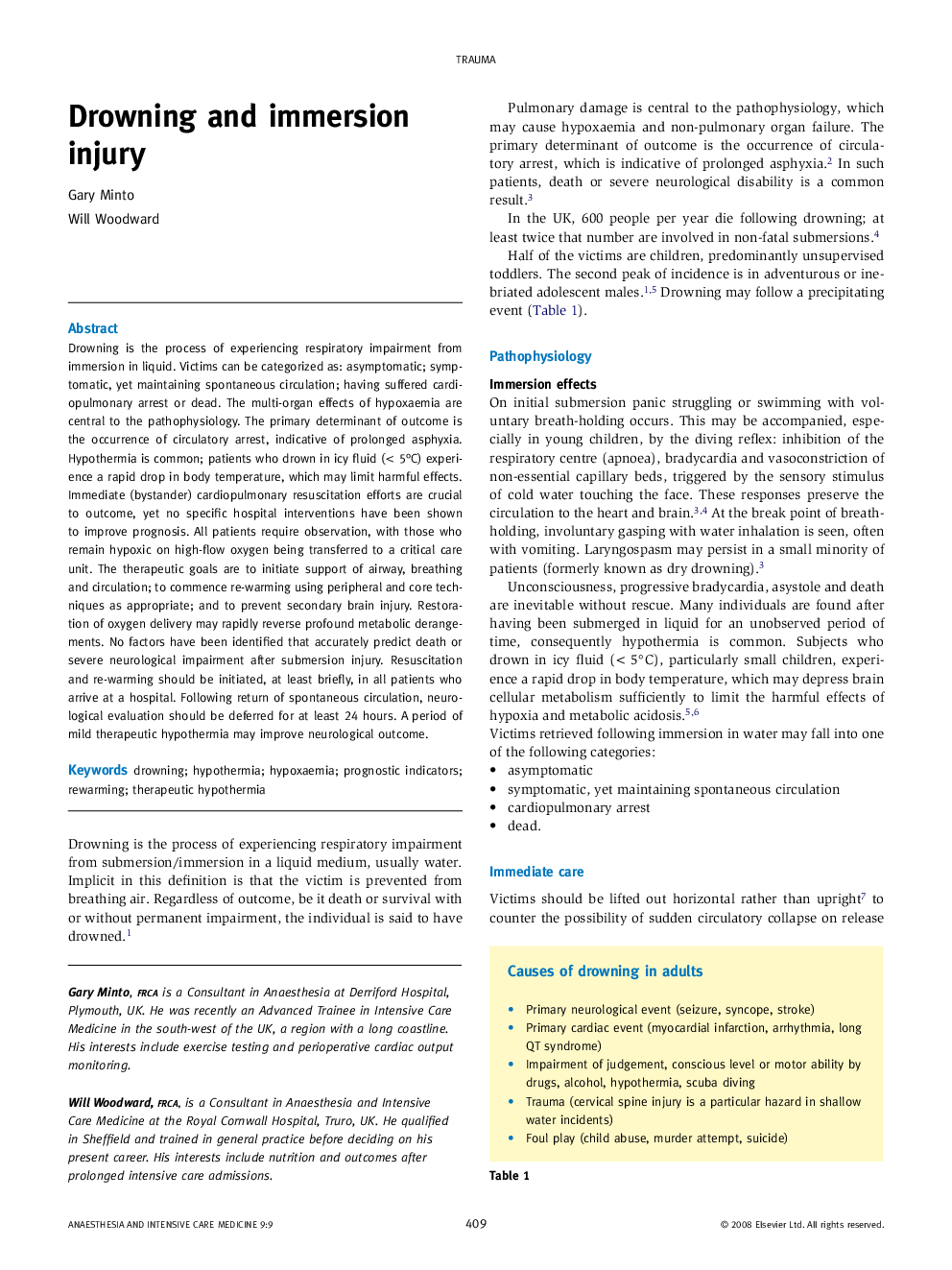| کد مقاله | کد نشریه | سال انتشار | مقاله انگلیسی | نسخه تمام متن |
|---|---|---|---|---|
| 2743753 | 1148699 | 2008 | 4 صفحه PDF | دانلود رایگان |

Drowning is the process of experiencing respiratory impairment from immersion in liquid. Victims can be categorized as: asymptomatic; symptomatic, yet maintaining spontaneous circulation; having suffered cardiopulmonary arrest or dead. The multi-organ effects of hypoxaemia are central to the pathophysiology. The primary determinant of outcome is the occurrence of circulatory arrest, indicative of prolonged asphyxia. Hypothermia is common; patients who drown in icy fluid (< 5°C) experience a rapid drop in body temperature, which may limit harmful effects. Immediate (bystander) cardiopulmonary resuscitation efforts are crucial to outcome, yet no specific hospital interventions have been shown to improve prognosis. All patients require observation, with those who remain hypoxic on high-flow oxygen being transferred to a critical care unit. The therapeutic goals are to initiate support of airway, breathing and circulation; to commence re-warming using peripheral and core techniques as appropriate; and to prevent secondary brain injury. Restoration of oxygen delivery may rapidly reverse profound metabolic derangements. No factors have been identified that accurately predict death or severe neurological impairment after submersion injury. Resuscitation and re-warming should be initiated, at least briefly, in all patients who arrive at a hospital. Following return of spontaneous circulation, neurological evaluation should be deferred for at least 24 hours. A period of mild therapeutic hypothermia may improve neurological outcome.
Journal: Anaesthesia & Intensive Care Medicine - Volume 9, Issue 9, September 2008, Pages 409–412